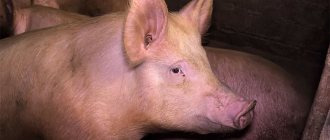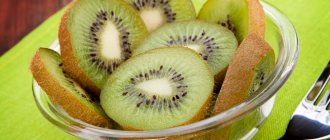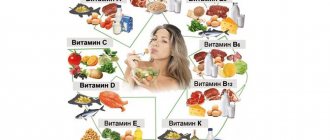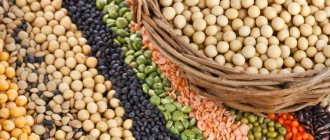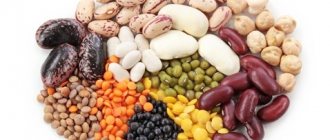In the modern world, eating healthy and regularly is difficult. People are highly active, are in a hustle and bustle and worry, so minimal time per day is allocated for food. As a result, metabolic processes slow down, the body does not receive enough useful components and vitamins, and the intestines experience malfunctions. To eliminate this problem, you need functional nutrition, which will make up for the deficiency of essential vitamins, minerals and components for optimal and coordinated work, as well as weight loss.
Functional nutrition: what is it?
Functional nutrition is a method of building a diet in which all foods consumed are organic and produced without the use of harmful chemical fertilizers or growth activators. The diet allows the body to obtain all the necessary substances.
The food you eat per day must contain:
- amino acids and fats;
- slow carbohydrates;
- fat-soluble and water-soluble vitamins.
Weight loss is based on the fact that most of the problems due to suppressed metabolism are manifested due to poor nutrition and intake of “empty food,” that is, refined foods that do not contain useful elements that support health. When you change your usual diet to a functional type of nutrition, your metabolism speeds up, your mood improves and your health improves.
We recommend reading about intuitive eating for weight loss. From the article you will learn about what “intuitive eating” means, the pros and cons of the method, the principles of nutrition, and whether it is possible to lose weight. And here is more information about the types of diets for weight loss.
Functional foods

Such products contain beneficial substances that are exclusively of natural origin. Only those that have received scientific evidence of their benefits to the body can be classified as functional products.
Biologically active natural components can be additionally added to such products:
- microelements;
- lactic bacteria;
- natural vitamins;
- amino acids;
- polyunsaturated fats;
- peptides;
- bioflavonoids.
Products suitable for functional nutrition are recommended to be eaten daily. Today they are divided into several main groups:
- Fermented milk products that have been fortified with probiotics - such as yoghurts, as well as other types of dairy drinks.
- Raw vegetables and fruits grown in the region where a person lives.
- Muesli, cereal, and porridge cooked in water.
- Seafood. These include crab, pollock, pink salmon, cod, salmon, etc.
- Vegetable oils (only of natural origin).
With the exception of completely natural products, you can also add ready-made functional nutrition meals to your diet.
For example, these could be purees, cereals, drinks or soups that have been previously enriched with natural and healthy dietary supplements. Thanks to the use of such a diet, the human body receives all the necessary nutrients for full functioning. Such products can still be compared with food intended for astronauts - the food is easily and quickly digested, homogeneous, and contains only natural and healthy elements.
Functional nutrition in Japan
Functional nutrition itself originated in Japan in the 50s of the 20th century. There, a special bio-yogurt was invented, the effect of which was aimed at quickly restoring and maintaining intestinal microflora - it was after this development that the method began to actively spread.
Later, in the early 80s, a government program was developed whose goal was to replace food that was produced using chemicals with healthy organic products.
Currently, about half of all food produced in Japan is classified as functional foods, many of which are also dietary. In this country you can also find healthy chocolates that help prevent heart attacks, and soups that improve blood circulation.
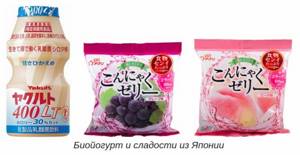
The average life expectancy of residents is 80 years. And most nutritionists believe that it is nutrition that allows you to achieve such high levels.
Who needs to take Energy Diet functional food?
1. For those who want to get rid of excess weight or, conversely, gain the missing weight.
NL International has developed special programs aimed at weight loss (cocktails are used INSTEAD of food) and weight gain (cocktails are used in ADDITION to food). Functional nutrition Energy Diet helps you lose weight without hunger and lack of nutrients, without irritability and loss of energy. Thanks to the protein in cocktails, muscle mass is preserved and fat mass is burned. 2. For those who play sports. If you drink cocktails according to the SPORTS program, the product will help build muscle mass, ensure rapid recovery of the body after sports and protect it from exhaustion. 3. For those who want to live long and intend to eat right. Consuming the Energy Diet functional food at least 1 serving every day gives you excellent health and normalizes your nutritional status. 4. For those who live in a busy schedule when there is no time to cook food. Energy Diet is very convenient to carry with you in a shaker and you can quickly drink it in any situation, anywhere, thereby maintaining your vitality and maintaining a healthy stomach. Are there any contraindications to the use of Energy diets? You can read about this here.
What problems does Energy Diet functional nutrition solve?
Just some 20-30 years ago, humanity had no time for dietetics; it was believed that there were more important tasks. However, starting in 1989, first in Japan, and then in Europe, the USA and Russia, proper nutrition began to be placed almost in first place among the tasks of increased importance, which are aimed at prolonging healthy human life.
Our body can be compared to a biological machine, programmed to receive certain components (balanced and in certain quantities) to maintain proper functioning. Today, alas, this does not happen, our body does not receive enough of some substances and receives others in excess, as a result of which our “machine” breaks down and malfunctions.
It has long been proven that poor nutrition is the most important cause of most diseases, including incurable ones. Our usual diet, unfortunately, is overloaded with sugars, fats and calories, and poor in vitamins, minerals and fiber.
Why?
- The first problem is food poor in vitamins. The introduction of man into nature caused the properties of natural foods to change, and this led to a chronic lack of minerals and vitamins in people's bodies.
- The second problem is terrible food. For the sake of profit, many manufacturers are ready to do things like artificially increase the shelf life of products, use harmful preservatives, flavoring additives, etc.
- The third problem is eating habits. In the modern world, the level of stress is constantly increasing, and to relieve it, people often resort to excessive consumption of food. We have stretched our stomachs, got used to eating a lot and have forgotten the main purpose of food - it is to supply the body with building material and energy, and not pleasure. We have forgotten that we need to eat in order to live, but not vice versa.
The development of functional nutrition began with these problems.
Advantages and disadvantages of the method
The advantages of this nutrition method are:
- it helps improve health and improve performance;
- no chemical additives or fertilizers are used in production;
- food saturates the body with all necessary elements;
- the diet is almost unlimited, but promotes weight loss;
- people of any age can follow it;
- the technique helps cleanse the gastrointestinal tract of waste and toxins;
- it normalizes the functioning of many body systems.

The only disadvantage of functional nutrition is that if the diet is prepared without a detailed analysis of the chemical composition of food, there is a risk of developing allergies.
Advantages and disadvantages
Functional nutrition for weight loss has only advantages; there are simply no disadvantages to following it. Among the advantages are noted:
- Normalization of metabolic processes;
- Removal of toxins and waste;
- Improving the functioning of the gastrointestinal tract;
- Strengthening immunity;
- Rejuvenating effect;
- Available at any age;
- Diet variety.
The advantage of a functional eating style... is precisely that it is not a restrictive diet, but a set of natural long-term measures to eliminate the physiological causes of disease and early aging: excess carbohydrates, hyperinsulinism, gastrointestinal disorders, depression, chronic deficiency of essential proteins, fats and minerals. (K. Monastyrsky, “Fundamentals of absolute health and longevity. Functional nutrition”)
This diet is not a strict diet, it is easily tolerated, and allows you to change eating habits that will only benefit your health and optimal functioning. The main thing is to follow it regularly and not to do cheat meals, which in this case are not at all appropriate. Over time, the body will adapt to eating healthy foods and will no longer create the need to choose unhealthy and toxic foods.
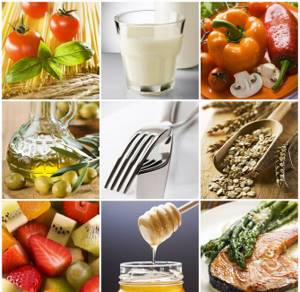
Functional food - what is it?
Functional food is completely natural, that is, no harmful chemical additives were used in its production. It contains substances such as:
- microelements,
- amino acids,
- vitamins,
- bioflavonoids,
- lactobacilli,
- polyunsaturated fats.
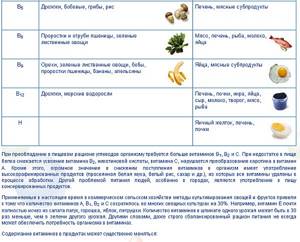
- cleansing the digestive organs;
- removal of waste and toxins;
- acceleration of metabolism;
- Helps in muscle growth.
Authorized Products
All food should be natural, and it is especially important to include in your diet:
- meat, poultry, fish and seafood;
- eggs, water porridge and muesli;
- vegetables and fruits;
- kefir, yogurt, sour cream, butter, cheeses and cream.
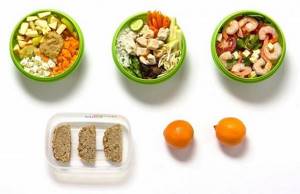
Sports nutrition can also be included on the list because it contains many beneficial ingredients and is not chemically processed during production.
The list consists of foods that can saturate the body with all the substances it needs for full functioning, improve the functioning of many systems and help with weight loss. You should consume them daily, while not forgetting to comply with your own daily calorie intake.
Watch this video about what functional nutrition is:
Products developed for sports nutrition
Sports nutrition is produced to meet the nutritional and energy needs of training people. Such products usually help the athlete accelerate muscle growth, provide the athlete with the necessary energy, and replenish nutrients lost during training. This could include, for example, sports drinks with electrolytes, protein bars and mixtures, and sports supplements with creatine and taurine.

Products to avoid
Prohibited foods include the following food groups:
- freeze-dried and ground coffee;
- ice cream and baked goods, including bread;
- various cereals and instant porridges;
- sweets, honey, cocoa and chocolate;
- food with dyes and preservatives;
- both packaged and homemade juices;
- mozzarella and cream cheese;
- sausages;
- veal and store-bought chicken;
- dried fruits not produced independently;
- cabbage and legumes.

It is not prohibited, but the consumption of vegetable oils is not encouraged due to the fact that they are not sources of cholesterol and phospholipids necessary for the body to function properly. Also, during technical processing, carcinogens appear in them, the amount of which increases when exposed to temperature, so they should only be taken raw and used as a salad dressing.
Permitted and prohibited products
Functional foods are not just high-quality products that relate to proper nutrition, they are products grown exclusively in a clean environment in which there are no additives. Functional foods are those that have been scientifically proven to benefit the body and deserve to be the best.
Functional nutrition is based on environmentally friendly (organic) products that have undergone minimal processing, without preservatives, dyes, flavoring additives, antibiotics, pesticides and herbicides that contribute to the occurrence of allergic reactions and malignant tumors. (K. Monastyrsky, “Fundamentals of absolute health and longevity. Functional nutrition”)
There are functional nutrition products that are divided into groups:
- Meat (pork, beef, rabbit, etc. The most important thing is to know for sure that no antibiotics, hormones, or growth stimulants were introduced into the diet when raising animals);
- Fish (sea, river, ocean. You should avoid fish that is raised on farms - salmon, dorado, carp, pangasius, telapia. When growing these fish in artificial conditions, growth accelerators and antibiotics are used. When choosing raw fish, give preference to those that are characteristic for your region. From frozen fish, it is better to choose herring, hake, pollock, saury, sardine - they are not artificially grown);
- Poultry (domestic chickens, ducks, geese, quails, turkeys are suitable. The rule is the same as when choosing meat - it is important to be 100% sure that the birds were raised without hormones, antibiotics, etc.);
- Bird eggs (chicken, quail);
- Kefir, curdled milk, yogurt, cream, sour cream, butter and cheeses;
- Vegetables and fruits (except prohibited ones).
These products must be present in food during functional nutrition. It is advisable to include small quantities of foods from each group in your diet every day, adjusting to your daily calorie intake. They allow the body to be saturated with useful components, will be able to normalize the functioning of the digestive system, and will normalize all disrupted processes.
As for prohibited products, it is strictly forbidden to consume:
- Instant and ground coffee (these products contain rancid oils that negatively affect the walls of blood vessels. Regular consumption of low-quality coffee is one of the superfactors of early atherosclerosis);
- Ice cream (whipped sugar and fats of unknown origin are bad for the health of the liver and pancreas);
- Bread, rolls (the so-called “dietary varieties” are especially dangerous - bread, rolls with bran, rye. They affect the contents of the intestines in the same way as yeast affects dough. Speaking of white bread, it is obvious that it is a source of unnecessary fast carbohydrates);
- Porridges and cereals (although many diets promote the consumption of cereals, this should not be done. They also contain carbohydrates in much larger quantities than we need);
- Chocolate, cocoa, sweets, sugar, honey, jam (needless to say, there is a lot of sugar in these products, and the composition of sweets is often reliably unknown);
- Products with unknown components in their composition (any incomprehensible word that you have not encountered before is a reason to refuse the product);
- Packaged and homemade juices (both homemade and industrial juices contain an unusually large amount of sugar, and due to processing they lose almost all vitamins due to oxidation);
- Spread cheese and mozzarella (these types of cheese are unfermented accumulations of milk proteins, which are strong allergens and are practically not digestible by the human body);
- Margarine, butter substitutes (these products are often obtained by artificial hydrogenation of vegetable fats; they are not related to dairy products. Low-quality vegetable fats negatively affect the walls of blood vessels);
- Monosodium glutamate (included in cheap food products. It provokes migraines, negatively affects the heart, as it contains Sodium ions);
- Sausages, frankfurters, sausages (these products are made from low-grade animal raw materials at best. The color of the “meat” is achieved due to nitrates, and the taste of the sausage is achieved by salt, spices, flavor enhancers, monosodium glutamate);
- Veal, broilers, chickens (industrial chicken and veal are some of the most contaminated foods with antibiotics, hormones and growth accelerators. Speaking of chickens, it is not difficult to tell the difference between “organic” home-raised chicken and broiler chicken. Domestic chickens are usually lean, muscular , cyanotic, because during life they moved actively, unlike broilers, which live in cages; they ate natural food);
- Vintage wines (wine contains sulfites, which act as preservatives. They first provoke rapid dilation of blood vessels, and after a while they narrow, resulting in headaches. Fortunately, many producers have begun to produce organic wines labeled “Contains sulfites”, which indicates the presence of only sulfites naturally formed during the fermentation of grapes in the product);
- Products containing tyramine (tyramine is an amino acid found in canned fish, mature hard cheeses, smoked and dried meats, and pickles. Tyramine provokes migraines);
- Diet drinks (saccharine and aspartine are carcinogenic factors, which also increase the concentration of insulin in the blood);
- Dried fruits (store-bought dried fruits do not contain vitamins and are processed with numerous preservatives and syrups. If you want dried fruits, prepare them yourself using dehydrators for vegetables and fruits);
- Cauliflower, broccoli, peas, beans, lentils (contain much more fiber than a person needs).
Also, functional nutrition presupposes a category of foods that can be consumed, but this is not advisable. These include vegetable fats - olive, sunflower, corn, flaxseed. You can consume them as they contain omega-3 fatty acid (essential).
However, studies show that these oils do not supply the body with cholesterol (a substrate for the synthesis of hormones of the sex glands and adrenal glands, the formation of lipoproteins), phospholipids for the construction of cell membranes. In addition, during industrial processing, carcinogens are formed in oils, and when frying, their amount only increases. Therefore, if you want to consume vegetable oils, do so only in their raw form.

Who is Konstantin Monastyrsky
Konstantin Monastyrsky is the most famous functional nutrition consultant. He came to follow such a diet after he became ill with diabetes. After reviewing his eating habits, he came to the following conclusions:
- problems in the functioning of body systems appear due to a lack of proteins, fats, minerals and vitamins;
- Excessive consumption of fiber and fast carbohydrates is not beneficial.
The specialist himself adheres to the following diet:
- fried fish and casserole;
- coffee with 1 teaspoon of sugar and cream, tea;
- butter, dairy products and cheese;
- various salads from permitted vegetables and meat;
- meat soups and dishes like chops and kebabs.

Rules and principles
The main rule of functional nutrition is the use of high-quality foods with high energy value. They should saturate the body, suppress hunger, without causing food allergies and other side effects.
Professor Gorelov highlights the following principles on which functional nutrition is based:
- Presence of probiotics. To regulate intestinal microflora, it is necessary to take kefir with bifidobacteria. The functioning of the intestines will be improved, the body will be able to receive only benefits from the products;
- River and sea products. It is necessary to create at least 2-3 fish days per week. Fish allows you to saturate the body with essential amino acids, as well as phosphorus. It improves brain function, strengthens the immune system, helps to be healthy and strong;
- Meat, fish, eggs, poultry, dairy products - these are the main components from which you need to form your diet.
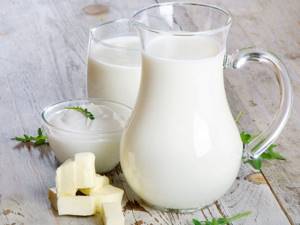
The main principles of a functional diet according to Monastyrsky
The functional diet according to Monastyrsky involves adherence to the following principles:
- It is necessary to avoid vegetables and fruits high in fiber. This is explained by the fact that excessive consumption of this substance can lead to gastrointestinal disorders. The consultant claims that you should only eat plant foods during the season when they grow naturally, and you should completely exclude potatoes from your diet.
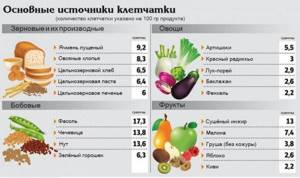
- The consumption of baked goods and grains should be kept to a minimum. The sharp rise in insulin that occurs after eating this food converts carbohydrates into fat. For this reason, you should stop eating pasta and flour foods.
- It is important to increase the amount of dairy and meat products. Animal products can saturate the body with the required amount of vitamins, proteins and fats. To get the maximum benefit, you should chew the meat thoroughly - this is the only way to release the necessary enzymes. When buying meat in a store, you need to soak it in milk to neutralize antibiotics and other harmful substances.
ShHR: P 3007 2015 7 AVT: Prichko G.G.; Droficheva N.V. ZGL: Modeling of recipe compositions of functional food products from fruit and berry raw materials VYKH: Food industry, 2015; N 7. - pp. 18-20 DATE: 2015
ShHR: P 1855G 2015 1 AVT: Chernenko A.V. Krasnodar Research Institute for Storage and Processing of Agricultural Products; Altunyan M.K. ZGL: Development of technology for functional food products based on Jerusalem artichoke and feijoa OUT: Izv.university.Food.technology, 2015; N 1. - pp. 58-61 DATE: 2015
ShHR: 15-7346 AVT: Cherkashina G.A. ZGL: Selection and justification of the direction of development of functional food products OUT: Innovations and modern technologies in the production and processing of agricultural products, 2014. - P. 312-314 DATE: 2014
ShHR: 05-13723B 2014 N 6 AVT: Konovalov A.V.; Malikova M.A. ZGL: Production of functional food products based on licorice root extract EXIT: Vestn. Michur. state agrarian Univ., 2014; 2014 N 6. - pp. 37-40 DATE: 2014
ShHR: P 3007 2014 5 AVT: Melnikova E.I.; Bogdanova E.V.; Burtseva M.I.; Ivanov S.S. ZGL: Milk-plant extract of lupine - raw material for functional food products OUT: Food industry, 2014; N 5. - pp. 70-73 DATE: 2014
ShHR: P 1514 2014 83(3 Appendix) AVT: Sinyavsky Yu.A.; Basymbekova AM; Vyskubova V.G.; Puchkova M.S.; Bespalova Yu.N.; Yakunin A.V. ZGL: Prospects for the development of functional geroprotective food products based on non-traditional raw materials VYKH: Vopr.pitaniya, 2014; T.83, No. 3 Appendix. — P. 125 DATE: 2014
ShHR: P 1514 2014 83 (3 Appendix) AVT: Ermolenko E.V.; Kasyanov S.P.; Latyshev N.A. ZGL: Alkylglycerol ethers - potential ingredients for functional foods VYKH: Vopr.pitaniya, 2014; T.83, No. 3 Appendix. — P. 179 DATE: 2014
ShHR: P 3681 2014 2(1) AVT: Shalagina Yu.A.; Kisimov B.M. ZGL: Possibility of creating functional food products based on fast-cooking cereals EXIT: Bulletin of the South Ural State University. Series Food and Biotechnology, 2014; T.2, N 1. - P. 91-93 DATE: 2014
ShHR: P 3621 2014 2 AVT: Dolgolyuk I.V.; Tereshchuk L.V.; Trubnikova M.A.; Starovoitova K.V. ZGL: Vegetable oils - functional foods VYKH: Equipment and technology of food production, 2014; N 2. - pp. 122-125 DATE: 2014
ShHR: P 3621 2014 4 AVT: Stefankin A.E.; Krokhalev A.A.; Kotlyarov R.V.; Krieger O.V.; Joaquin Puzo Dengra; Ivanets V.N. ZGL: Selection of parameters for the hydrodynamic insert of a membrane installation for processing the blood of farm animals [Creation of functional foods and therapeutic and prophylactic drugs] OUT: Equipment and technology of food production, 2014; N 4. - pp. 106-112 DATE: 2014
ShHR: 14-10321 AVT: Golovin M.A.; Ganina V.I.; Ionova I.I. ZGL: Prospects for the use of cholesterol-reducing strains of microorganisms in the technology of functional food products OUT: Ways to intensify the production and processing of agricultural products in modern conditions. Processing of agricultural raw materials and food products, 2014. - pp. 164-165 DATE: 2014
ShHR: 14-11543 AVT: Popova E.I. ZGL: Development and implementation of technology for the production of functional food products from viburnum VYKH: Problems of functioning and development of the regional market of consumer goods and services, 2014. - pp. 195-196 DATE: 2014
ShHR: 14-9267 t.1 AVT: Vershinina G.A.; Komarova V.I.; Drevin V.E. ZGL: Production of functional food products based on fruit and vegetable raw materials VYKH: Scientific foundations of the strategy for the development of the agro-industrial complex and rural areas in the conditions of the WTO V. 2, 2014; v.1. — pp. 406-409 DATE: 2014
ShHR: 15-3403B AVT: Lukinykh S.V.; Rebezov M.B.; Popova M.A.; Gayazova A.O. ZGL: Development of functional food products taking into account modern requirements OUT: Food industry: safety and integration, 2014. - pp. 31-33 DATE: 2014
ShHR: 15-4285 AVT: Kireeva O.A.; Semenova L.A.; Nechaev A.P. ZGL: The use of polysaccharides from grains and legumes in functional foods OUT: Proceedings of the International Scientific and Practical Conference "Import substitution of products of deep processing of grain and potatoes", 2014. - pp. 91-92 DATE: 2014
ShHR: 05-13723B 2014 N 5 AVT: Vinnitskaya V.F.; Popova E.I.; Parusova K.V.; Evdokimov A.A.; Efremova Yu.E. ZGL: Research into the functional properties of vegetables, fruits, berries, leaves and herbs and the creation of new generation functional food products EXIT: Vestn. Michur. state agrarian Univ., 2014; 2014 N 5. - pp. 63-67 DATE: 2014
ShHR: 15-7346 AVT: Cherkashina G.A. ZGL: Selection and justification of the direction of development of functional food products OUT: Innovations and modern technologies in the production and processing of agricultural products, 2014. - P. 312-314 DATE: 2014
ShHR: P 3007 2013 2 AVT: Pilat T.L. (Doctor of Medical Sciences) ; Belykh O.A.; Volkova L.Yu. ZGL: Functional foods: a timely necessity or a common misconception? OUT: Food industry, 2013; N 2. - pp. 71-73 DATE: 2013
ShHR: P 3274 2013 1 AVT: Moiseenok A.G.; Morozkina T.S.; Moiseenok E.A.; Yankovskaya L.V. ZGL: Safety of vitamins: possible and imaginary threats [When receiving functional food products] OUT: Food ingredients: raw materials and additives, 2013; N 1. - pp. 29-32 DATE: 2013
ShHR: 13-8220 v.2 AVT: Getman A.A. ZGL: Use of soluble dietary fiber to create functional foods [Fibregam food additive based on acacia exudate] OUT: Innovats. long-term technologies storage of goods / Ross. state trade and economics University [et al.], 2013; at 2. — pp. 138-142 DATE: 2013
ShHR: 13-5274 t.1 AVT: Merenkova S.P. ZGL: Functional foods with selenium to reduce the negative effects of lipid peroxidation in the body EXIT: Let's talk about it. state and prospects for the development of the food industry and societies. food / South Ural. state Univ., 2013; v.1. — pp. 81-84 DATE: 2013
ShHR: 13-12182B AVT: Teplyakova T.V. (Doctor of Biological Sciences) ; Kosogova T.A.; Ananko G.G.; Bardasheva AB; Kikhtenko N.V. ZGL: Mushrooms are a source of functional foods and therapeutic and prophylactic drugs EXIT: Food. Ecology. Quality: tr. X intl. scientific-practical conf. / Sib. scientific research Institute of processing agricultural products [etc.], 2013. - pp. 238-242 DATE: 2013
ShHR: 13-12184B AVT: Semenikhin S.O. Krasnodar Research Institute for Storage and Processing of Agricultural Products ZGL: Use of dietary fiber from beet pulp in modern functional food products EXIT: Scientific. contribution of young scientists to the development of food and processing. industrial agro-industrial complex: collection. scientific tr. VII conf. young scientists and research specialists institute of the Department of storage and processing of agricultural products. products of the Russian Agricultural Academy, October 8-9, 2013, 2013. - pp. 395-397 DATE: 2013
ShHR: 14-1609B AVT: Kitaeva M.V.; Malykova O.V. ZGL: Problems of innovative development of food industry enterprises and the functional food market in modern conditions OUT: Innovative approaches in the management of the agro-industrial complex, 2013. - pp. 176-177 DATE: 2013
ShHR: 14-3713B 2013 N 3 AVT: Storublevtsev S.A.; Lavrov S.V.; Kolomytseva O.Yu.; Duvanova Yu.N. ZGL: Technical and economic assessment of the production of functional ingredients and functional food products OUT: Vestn. Voronezh. state Univ. engineer. Technologies, 2013; 2013 N 3. - P. 245 DATE: 2013
ShHR: 14-3571 AVT: Remizov S.V. Kemerovo Technological Institute of Food Industry ZGL: Study of the antioxidant activity of raw materials in the development of functional food products using the example of carrot nectar EXIT: Relevant. problems of nanobiotechnology and innovation from non-traditions. nature resources and creation of functions. products / Russia acad. natural Sciences, 2013. - pp. 10-13 DAT: 2013
ShHR: 14-5974B AVT: Altunyan S.V.; Ivanova E.E.; Altunyan M.K. ZGL: Functional food products based on non-traditional raw materials OUT: Bakery, confectionery and pasta products of the XXI century, 2013. - P. 69 DATE: 2013
ShHR: 14-11952 t.2 AVT: Folmanis G.E.; Kovalenko L.V. ZGL: Plant raw materials for functional foods VYKH: Modern trends in agriculture T. 2, 2013; v.2. — pp. 84-87 DATE: 2013
ShHR: 15-127 AVT: Sycheva O.V.; Temiraev R.B.; Kochieva I.V.; Bazaeva L.M.; Kokaeva M.G. ZGL: Technology of processing broiler meat for the production of functional food products [Production of sausages] OUT: Current. question improvement of production and processing technology. rural products households, 2013. - pp. 156-159 DATE: 2013
Is it worth drinking cocktails from TianD?
Cocktails from TianD are a source of nutrients that can be consumed regardless of the time of year. They are mixtures of protein with cereals and vegetables. By consuming these foods, you can saturate your body with the necessary amount of fiber and amino acids.
Cocktails are presented in 4 options:
- lentil cream soup;
- vanilla mix;
- mix with cereals and amaranth;
- mix with amaranth and broccoli.
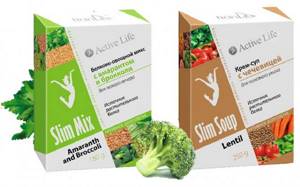
Where to buy quality functional food products for weight loss
You can purchase products for following a functional diet for weight loss in stores that sell food for vegetarians and vegans, or in eco-markets. Meat food cannot be found in such places, so it must be taken only from trusted farmers.
It is always important to inquire about how products were produced and check quality certificates. If you have your own summer cottage, in the spring and summer you can grow your own vegetables on it, the production technology of which will not raise any doubts.
We recommend reading about fractional meals for weight loss. From the article you will learn about the principles of fractional nutrition, its advantages and disadvantages, the menu for the week, and recipes. And here is more information about the Energy diet complex for weight loss.
Functional nutrition helps to lose weight and saturate the body with useful elements. The basic principle of this method is that all food must be grown without the use of chemicals. When losing weight using this method, you can increase your performance, improve the functioning of your gastrointestinal tract and improve your well-being.
Konstantin Monastyrsky is a specialist who advises people on proper dieting. Thanks to this approach, you can not only acquire the ideal body shape, but also stay in it for a long time.
Useful video
Watch this video about the functional nutrition of TianD products:
Similar articles
- Types of diets for weight loss: which ones are suitable for fast...
What types of diets for weight loss have ever been invented. Unfortunately, only a small number of quick methods work without harm to health. Which one should you give preference to? Read more - Intuitive eating for weight loss: what does the method mean...
Intuitive eating for weight loss looks quite unusual compared to diets. The method means that during this regime you can eat whatever you want. The peculiarities are that we must not forget about sports, and also not get carried away with fast food. What else gets in the way of weight loss? Read more
- Weight loss training based on functional...
You can conduct weight loss training yourself at home, especially for women who are on maternity leave. There are psychological, functional, high-repetition, interval, intense, strength. How to do it correctly? Read more


